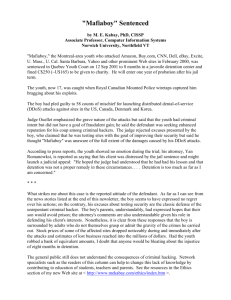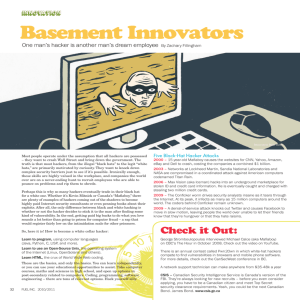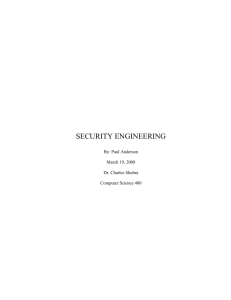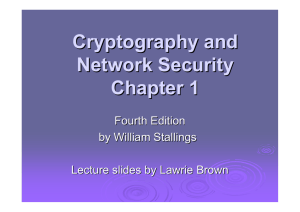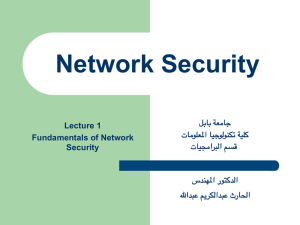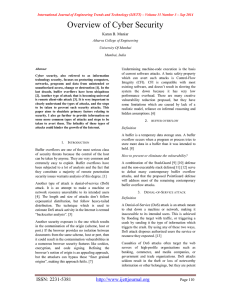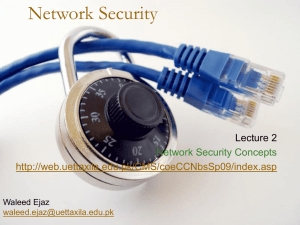Introductions IDA765
advertisement
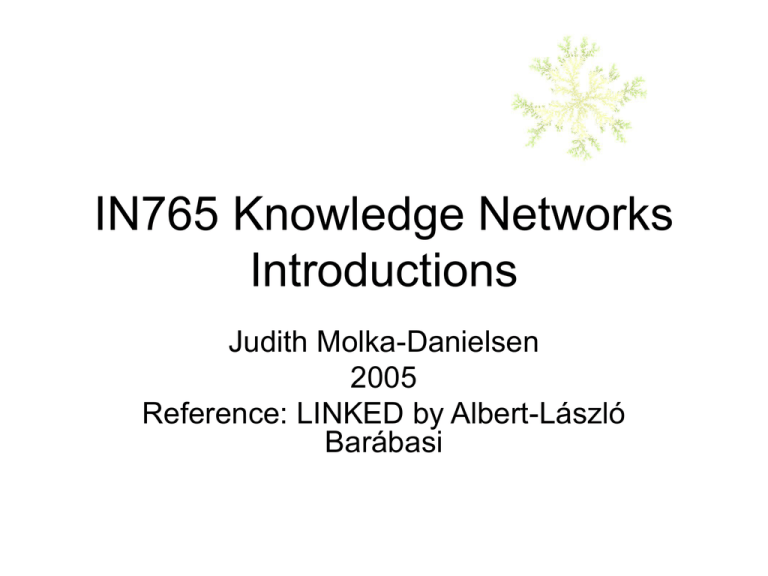
IN765 Knowledge Networks Introductions Judith Molka-Danielsen 2005 Reference: LINKED by Albert-László Barábasi Denial of Service Attacks on the Internet How vulnerable are we to such attacks? BBC News: Thursday, 13 September, 2001, UK 'Mafiaboy' hacker jailed A Canadian hacker nicknamed Mafiaboy has been sentenced to eight months in a youth detention centre. Judge Gilles Ouellet ruled that the 17-year-old teenager from Montreal committed a criminal act when he crippled major internet sites like Amazon and Yahoo last year, causing an estimated $1.7 billion in damages. Denial-of-service attacks Mafiaboy admitted involvement in denial-of-service attacks last year against websites belonging to several companies, including Amazon, Dell and eBay. The sites were bombarded with thousands of simultaneous messages, which prevented users from accessing them for up to five hours. Other charges involved illegal use of computers to help with the attacks. The judge also ordered the teenager to face one year of probation after his detention ends, and fined him $160. Social Networks and Technology Networks: Paul spreading the word, he did not walk randomly. Important features of Networks • The structure and topology of networks – Seeing the whole and not just the parts (not just reductionism). • The ability to navigate them (search, find). – Mapping networks – mapping the interconnectivity – helps us to navigate them. How are maps useful? • Maps of the Internet show the points of vulnerability to hackers • Maps of organizations of trade and ownership show trails of power (who affects the outcome of markets). • Maps of links between species in nature show the affects of mankind activities on ecosystems. • Maps of genes in cells show insight into how diseases grow. • Surprise: There can be many structural similarities in these diverse maps. Many networks have common characteristics of complex networks. Complex Systems • Share characteristics of many parts and many interconnectivities. • Often in nature these interconnectivities are not at random; they often follow laws of self-organization. Maps of Complex Networks: neurons, electric power grid, Internet, … Internet by Bill Cheswick Neurons by Ricard New York state power grid http://complex.upf.es/~ricard/complexnets.html http://www.math.cornell.edu/~durrett/probrep/probrep.html http://radio.weblogs.com/0105910/2004/02/16.html Types of Networks.. Social Networks Friends, families, colleagues Logical Networks Physical Resources Web-pages, P2Pfile sharing Internet IP routers, circuit switches, electricity, wireless telephony Roads, railroads, airlines Transport Economic Firms, markets, organizations Why Study the Structural Characteristics of Networks? • Availability and vulnerability of services: electric, telephone, air connections, etc. • Preventing or stopping of viruses on data networks. • The importance of weak ties: connectivness to the core, finding a job, finding a web page. • The characterization (Mapping) of network structure can lead to a better understanding of – the role of hubs in the spreading an idea, – the proliferation of a product in a market, or – to better management of organizations. Resources for In765 • The book LINKED is a conversational outline of the basic concepts of the course. We will use this to guide are area of study. • Resources on the web: like NetVis map software, Java/JUNG, and other visualization systems have to be explored for your use. I have pointers to some, and you may find others. • Some references from our course web page, `Statistical Mechanics of Complex Networks´ and `Introduction to Social Network Methods´, contain more details of the theory and math behind the concepts. • http://home.himolde.no/~molka/in765/time-plan-05.htm • You can select a student project that matches your skills and interests. Examples of previous projects Student Presented Presented Outline – written due Lecture 17.11.04 Present Date Bernt Louis Berge Søvik Yes Collaborative Researchers Comparative 24.11 (O) Tommy Kvalvik Yes Internet Routers - IP Adr. -Overload 18.11 (H) Ronny Hanset Ringen Yes Orkut Friends -cluster by country 24.11 (O) Tor Erik Olsen Smørholm Yes Vulnerability and Downtime on Uninett 24.11 (O) Kristian Kristoffersen Yes 80-20 Rule 18.11 (H) Thomas Håseth Johansen Yes Information Spread Study 18.11 (H) Øystein Kaldhol Yes BITTORRENT - Lifecycle Analysis ++ 18.11 (H) Yes Virus Simulation - Spreading Stopping 24.11 (O) Yes Instant Msging - Brass Bands work/play 24.11 (O) Geir-Arild Hellesvik Pål Elnan
